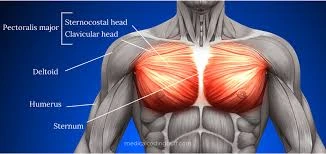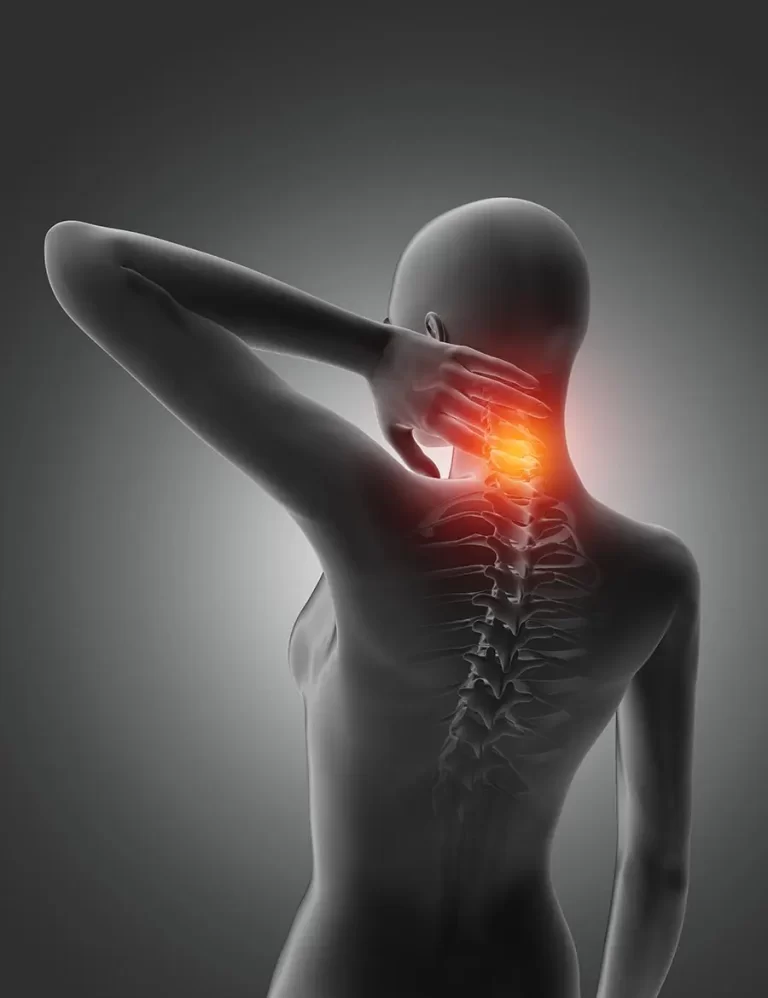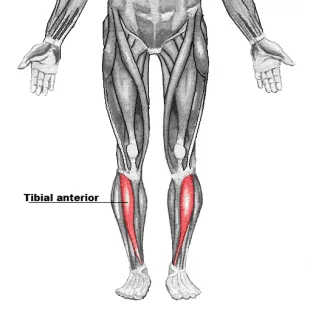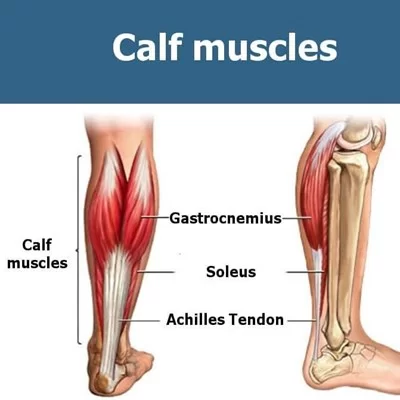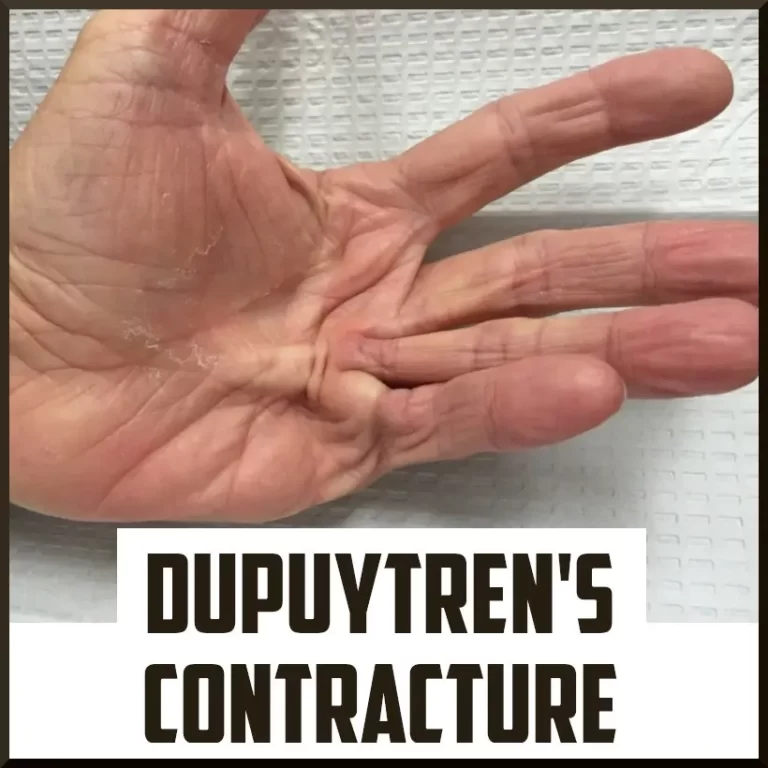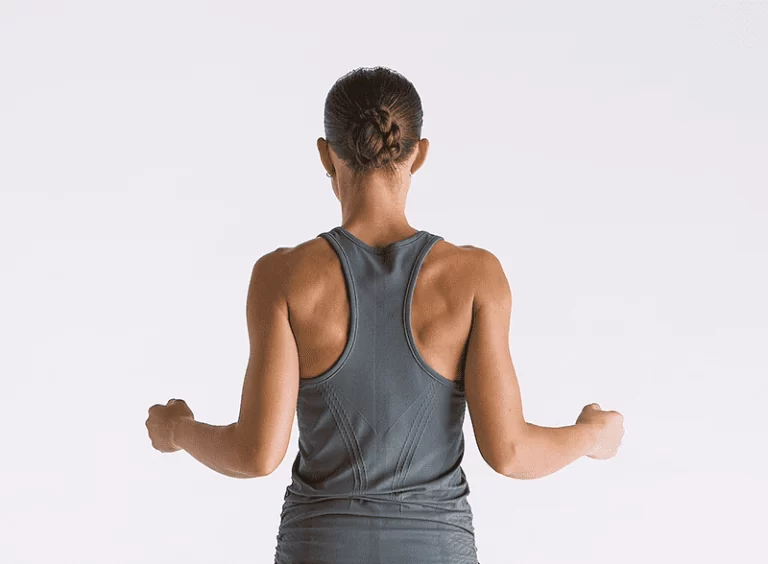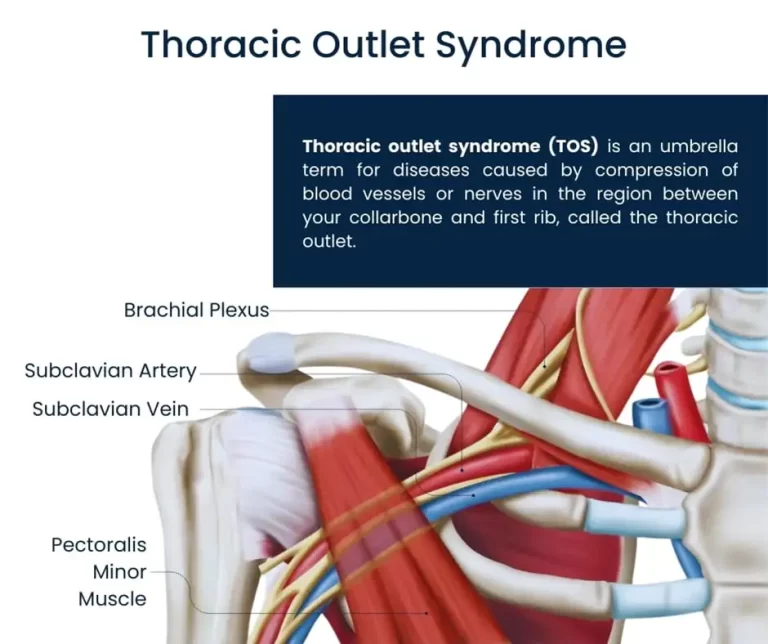Pectoral Muscle Pain
Pectoral Muscle Pain refers to discomfort or soreness in the chest muscles, which can arise from a variety of causes, including muscle strain, overuse, injury, or underlying medical conditions. These muscles, located in the chest area, play a crucial role in upper body movements such as pushing, lifting, and reaching.
Understanding the potential causes and symptoms of pectoral muscle pain is essential for effective diagnosis and treatment, ensuring optimal recovery and prevention of further issues.
What is Pectoral muscle pain?
The four muscles that make up the pectorals are paired on either side of the chest. It can be caused by a variety of injuries and strains, and it must be possible to distinguish this type of pain from other causes of chest pain. The patient experiences a reduction in arm function and limited arm movements; some conditions of this pain can be resolved with rest and ice packs, while others necessitate complex surgery. Physical therapy and pain medication can also help relieve this pain.
What is the anatomy of the pectoral muscles?
Each pair of pectoral muscles in the human body has two.
The pectoralis major and minor are the names of the bigger and smaller muscles, respectively.
The pectoralis major:
- muscle is considerably bigger.
- This muscle starts at the sternum, which is the breast bone and ribs, and the clavicle, which is the collar bone.
- This is joined to the bone of the humerus.
- This muscle aids in a number of shoulder motions.
The pectoralis minor:
- This muscle is situated beneath the pectoralis major and is smaller.
- This muscle joins to the scapula, or shoulder bone, and starts in the ribs.
- During arm motions, this muscle keeps the scapula stable.
Causes of Pectoral muscle pain?
- The injury that causes this pectoral muscle soreness is typically caused by weightlifting.
- The most common cause of this muscle damage is the bench press.
- When this muscle is severely injured, the pectoralis muscle tears.
- At the arm’s attachment point, the pectoralis muscle tears away from the collar bone and ribs.
- This tear might be partial or whole, and occasionally it gets too painful.
- Occasionally, a muscular sprain occurs.
- Complete rupture also happens.
- They are accompanied by pectoral muscular soreness and direct damage to the muscle.
- The patient sustains a muscular injury when they fall onto their chest and large things fall on it.
- American football and rugby are two sports that can cause pain and injury to the pectoralis muscles.
- Since the pectoralis minor is situated deep beneath the pectoralis major, it is not directly hurt; rather, it is harmed by overuse.
- Weight exercise, swimming, rugby, and bodybuilding can all cause injuries to the pectoralis minor muscle.
Symptoms of the Pectoral muscle injury?
- The patient experiences pain near the front of the armpit and where the muscle attaches to the humerus bone.
- Pectoralis minor pain typically starts gradually and is subacute in nature.
- There are sensitivity and pain trigger points in the affected area.
- The area of pain also has swellings and spasms.
- Inflammation can occasionally also appear where pain is felt.
- Patients experience shoulder mobility weakness and respiratory difficulties.
- The patient may occasionally show obvious signs of bruises.
- The pain is increased when the region is touched and pressed.
Which condition requires a doctor’s appointment?
- You must call your doctor and visit the hospital right away if you experience any of the symptoms of this muscle pain in addition to the chest pain.
- First, the doctor is brought in to evaluate the muscle ache.
- Take the patient’s history, ask some questions regarding the pain in the muscles, and try to find out what’s causing it.
- The physician then checks the region of pain for bruising, redness, and swelling.
- During the palpation, the pain area’s swelling and spasms are felt.
- The physician assesses the shoulder’s range of motion and strength.
- In order to diagnose pectoral muscle rips, the doctor also recommends ultrasound and magnetic resonance imaging (MRI) scans.
Treatment for pectoral muscle pain?
To lessen muscle pain in the beginning, the pain specialist suggests using the RICE method.
- R-rest = After experiencing muscle pain, the patient rests; during this time, you used to wrap the remaining muscles.
- I-ice = To relieve muscle pain, you can also apply ice to the affected area.
- C-compression = To relieve the swelling and spasms, you can also apply a compression bandage.
- E-elevation = To lessen swelling, raise the affected arm with a pillow under it.
Pain medication :
- You are accustomed to using non-steroidal anti-inflammatory medicines (NSAIDs), such as aspirin and ibuprofen, to relieve muscle pain.
- The doctor’s advice and the intensity of the pain determine the drug’s dosage.
- To relieve pain, you can also use dioflance and volini gel to the affected area.
Treatment for pectoralis major muscular strains:
- Conservative treatment is used to treat pectoralis major muscle strains and partial tears.
- During conservative treatment, the medical professional placed the affected arm in a sling to rest the muscle.
- Ice packs and painkillers were also placed on the strained area to assist reduce the agony.
- It takes four to six weeks for the muscle to recuperate from this damage.
- In order to restore optimal function, surgical treatment is typically a preferable alternative for athletes and other participants in competitive sports.
Treatment of pectoralis minor muscle injury:
- In addition to rest and pain medication, the doctor prescribes reducing any activity that caused the pectoralis minor strains.
- A combination of a local anesthetic and a corticosteroid is injected into the pectoralis minor tendon by the physician if the pain is more intense.
- In order to put the injection precisely, the medical professional also uses ultrasound.
Physical Therapy Treatment:
In order to alleviate muscle pain, the physical therapy treatment consists of electrotherapy, stretching, and exercise.
Electrotherapy for pectoral muscle pain:
- Ultrasound therapy, SWD, TENS, and an Interferential Current Therapy (IFC) machine are examples of electrotherapy treatments that are used to reduce pain and swelling in the affected area.
- Apply ultrasound to the trigger points and tender points to relieve pain and edema.
- To lessen pain, edema, and spasms in the affected area, apply SWD, TENS, and an IFT machine.
Stretching for pectoral muscle pain:
- Doorway Pectoral Stretch
- Camel Pose
- Floor Angels
- Behind-the-back Elbow-to-elbow Grip
- Above-the-head Chest Stretch
- Bent-arm Wall Stretch
- Extended Child’s Pose on Fingertips
- Side-Lying Parallel Arm Chest Stretch.
Doorway Pectoral Stretch:
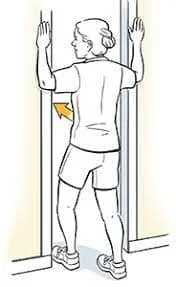
- Standing in an open doorway.
- Next, Step forward slowly with one foot.
- The patient experiences chest and shoulder joint strain.
- It’s important to stand straight and avoid bending forward.
- For 30 seconds, maintain this stretching position.
- Take a step back and unwind.
Camel Pose:

- The patient is kneeling on the floor with their hands on their waist and their knees hip-width apart.
- Place the toes flat against the floor and tuck them in.
- Next, place one hand on each heel while slowly reaching back.
- Maintain a raised chest, shoulders back and down, and slowly push your hips forward by using your core.
- Repeat this stretching exercise three times a day, holding it for 15 to 20 seconds each time.
Floor Angels:
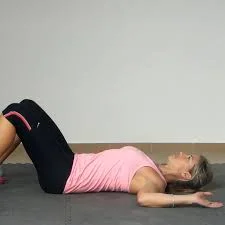
- With the palms pointing up toward the sky, place both arms at a 90-degree angle sideways.
- Maintaining constant touch with the floor, steadily raise your arms above your head until they are fully stretched.
- Return both arms to their initial 90-degree posture gradually.
- For three sets, perform this stretching exercise ten times.
- It’s important to keep the ribs tucked in and the back flat against the floor during this stretching.
Behind-the-back Elbow-to-elbow Grip:
- The patient starts out in a sitting and standing position with their shoulders pulled down away from their ears and their arms dangling by their sides.
- Expand the chest and gradually push the shoulder blades together.
Above-the-head Chest Stretch:
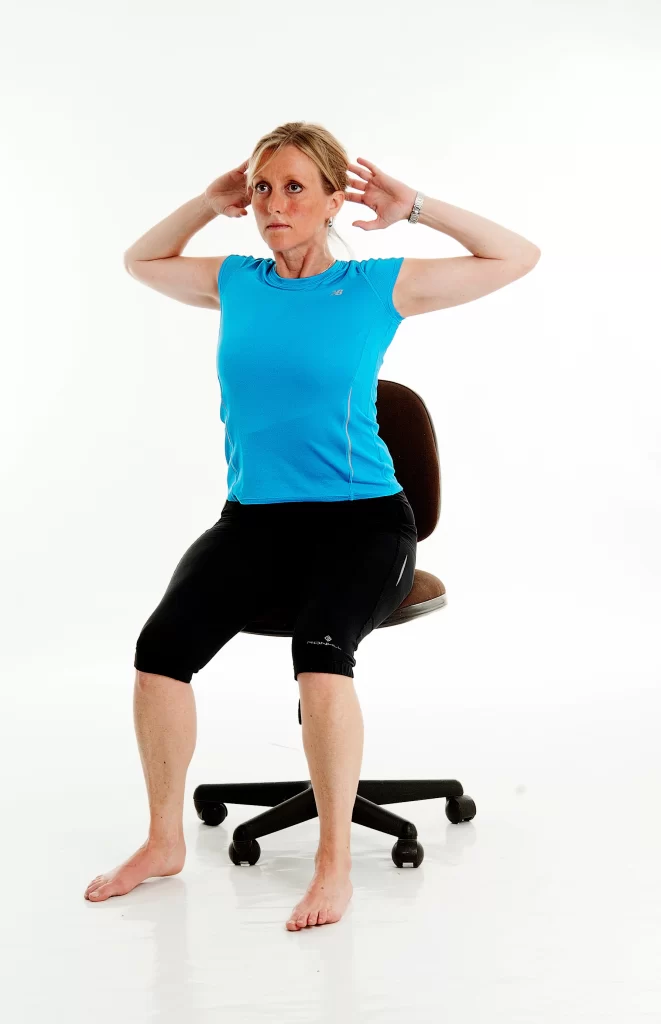
- When the patient is standing or seated, interlock their fingers, bend their elbows, and lift their arms above their heads.
- To highlight the shoulder joint and chest, adjust the height of the hands so that they are behind the head, on top of the head, and a few inches above the head.
Bent-arm Wall Stretch:
- In a doorway and at the end of a wall, the patient adopts a split stance, with the right leg in front and the left leg behind.
- You can stretch the different parts of your chest by raising and lowering your arm.
- Next, do this exercise again with the opposite side.
Extended Child’s Pose on Fingertips:
- The patient is sitting on their heels; try touching their big toes together.
- After that, divide the knee joint by roughly the same width as the hip joint. Next, walk the hands out as far in front of them as you can while bending them forward from the hip joint.
Side-Lying Parallel Arm Chest Stretch:
- After that, place the right temple on the ground.
- Surely For balance, keep your left hand on the ground.
- After that, stretch the opposite side.
Exercise for the pectoral muscle pain:
- Incline push up
- Flat bench press
- Incline bench press
- Decline bench press
- Push-up
- Cable crossover
- Chest dip.
Incline push-up:
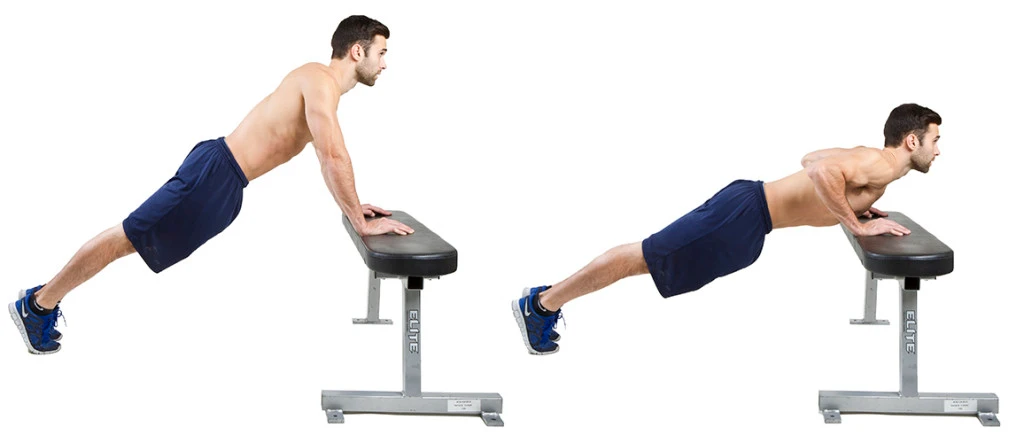
- The hands are placed on the wall, and a countertop of the height surface is used to begin this workout.
- Next, walk the feet back until the torso and floor form a 45-degree angle. Lower your chest to the surface and rest against it while maintaining a straight posture and a neutral spine.
- After a brief pause, go back to the beginning position.
- This resistance needs to be sufficiently light to perform all 20 repetitions.
- To make the exercise easier, go closer to the hands.
- Move farther away to make the workout more difficult.
Flat bench press:
- The weight is lifted off the rack when the arms are pressed directly toward the ceiling. Next, raise the weight above your chest.
- The weight of the chest can be gradually reduced by bending the elbow joint to a 45-degree angle.
- The bar needs to be kept about parallel to the nipples.
- After a brief pause, press the weight back into its initial position.
- Perform all three sets of 8–12 repetitions.
Incline bench press:
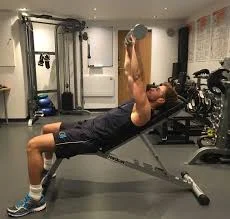
- With their feet level on the floor and their knees bent, the patient is positioned on the back of the inclination bench.
- The patient is holding the barbell with their hands facing their feet and their thumb encircling it.
- To remove the weight from the rack, press the arms directly toward the ceiling. Above the collarbone, place the weight.
- Next, Reduce the weight gradually until it is slightly above the nipples and about in line with the mid-chest.
- After a brief pause, press the weight back into its initial position.
- Perform all three sets of 8–12 repetitions.
Decline bench press:
- The patient is lying on his back on the decline bench, with his ankles locked behind the ankle rests and his knees bent.
- The patient is holding a barbell with their hands facing their feet and their thumb encircling the barbell.
- The weight is positioned in the upper belly region, above the lower chest.
- Next, Lower the weight to the chest, around where the nipples are, by slowly bending the elbow joint.
- After a brief pause, press the weight back into its initial position.
- Perform all three sets of 8–12 repetitions.
Push-up:
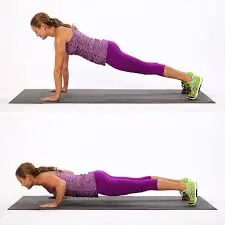
- After starting on their hands and knees, the patient returns to a high plank position.
- The legs should be straight with the quadriceps, and the hands should be slightly wider than the shoulders.
- Maintaining a straight line from head to heel, drop the chest toward the floor by keeping the core muscle taut and bending the elbow joint at a 45-degree angle.
- To make the elbow joints straight press the chest away from the floor.
- After that, repeat and finish 8–12 repetitions.
- Perform the three exercise sets.
Cable crossover:
- Standing away from a set of high pulley cable machines and resistance bands that are fastened overhead is how this exercise begins.
- Choosing a light to moderate weight increases the difficulty but increases the likelihood of success.
- As they advance one foot, grasp the hands (or the band’s ends). Keep the handles in front of the chest and maintain adequate tension and control over them.
- To highlight the serratus anterior muscles, the hands are crossed.
- Next, repeat on the opposite side.
- Perform 8–12 repetitions in 3 sets.
Chest dip:
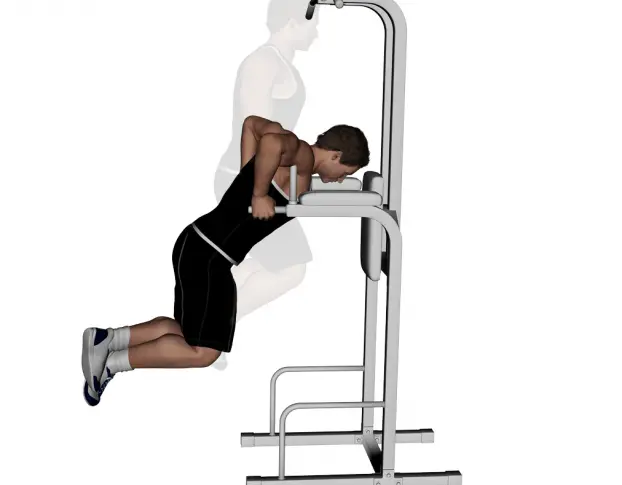
- The patient is standing, facing the two parallel bars, and holding them with their palms facing inward.
- Next, raise the torso until it is parallel to the hands by straightening the elbow joint and applying pressure to the hands.
- Next, drop the chest toward the hands while bending the elbow joint. After pausing, press to return to the initial position.
- Repetition Perform the 8–12 repetitions in three sets.
How to Prevent Pectoral Muscle Pain?
- After working out or participating in sports, stretch.
- Steer clear of sudden, severe strength exercises and increase your strength gradually. As part of your general physical activity, perform regular stretching and strengthening exercises for your sports, fitness, or job effort.
- You can reduce your risk of muscular strains by participating in an exercise program.
- Instead of playing your sport to get in shape, try to be in shape to play it.
- If your job requires a lot of hard labor, regular exercise can help prevent injury.
- To maintain a healthy weight, engage in an exercise regimen and eat a balanced diet. Muscle strain can be increased by being overweight.
FAQs
Can pectoral pain be caused by stress?
How chest pain is caused by anxiousness. Your brain causes a spike in cortisol and adrenaline while you’re feeling nervous. Your blood pressure and heart rate quickly increase as a result of these hormones. Many patients suffer from perspiration, chest pain, or difficulty breathing as a result.
What is the duration of pain in the pectoral muscles?
Chest pain is deemed chronic if it persists for more than twelve weeks and could be caused by repetitive motions and prolonged activity.
Is it appropriate to massage a pec strain?
Activities that enhance blood flow to the damaged muscle should be avoided in the initial days after a pectoralis major strain. These include taking a hot shower, stretching the pectoralis, applying heat, getting a massage, drinking alcohol, and using the arm excessively.
How can modest pectoralis pain be resolved?
Massage Therapy: Deep tissue massage is one technique that can ease tense muscles and encourage recovery. Strength Training Activities: To regain strength, gradually add workouts like resistance band chest presses and wall push-ups.
What symptoms indicate pectoral?
Bruising, weakness, and an abrupt onset of chest and upper arm pain are signs of a pectoral muscle or tendon rupture. When the injury happens, some people may also experience a “pop” in their upper arm. Additionally, the shape of the armpit and upper arm may noticeably shift.
How can pec tension be resolved?
The four best stretches for a strained chest muscle are elevation, compression, ice, and rest. These should be used as a first line of treatment to control pain and inflammation during the acute stage of the injury. It’s also critical to avoid activities that make the pain worse and to give the body time to recover.
How may pectoral pain be relieved?
For ten to twenty minutes at a time, apply ice or a cold pack to the hurting spot. For the next three days, while you are awake, try to do this every one to two hours, or until the swelling subsides. Apply a warm towel or a heating pad on low to the sore spot after two or three days.
What is the duration required for the healing of a pec strain?
How much time does it take for pec strains to heal? Grade 1 strains of the chest can heal in as little as two to three weeks, depending on the severity of the injury. Grade 2 strains can heal in 4–8 weeks, whereas grade 3 strains might take 6 months or more to heal and frequently require surgery.
How does pain in the pectoral muscles feel?
Usually felt near the front of the armpit, this pain can also occasionally be felt throughout the chest. Something ‘tearing’ in your chest is another possible sensation at the same time. You might be able to continue taking part with only mild pain if you have minor tears.
References
- Patel, P. (2024, December 25). Pectoralis Major Muscle Strain – Cause, Symptoms, Treatment. Samarpan Physiotherapy Clinic. https://samarpanphysioclinic.com/pectoralis-major-muscle-strain/
- Ladva, V. (2024b, December 10). Pectoral muscle pain: Cause, Symptoms, Treatment, Exercise. Samarpan Physiotherapy Clinic. https://samarpanphysioclinic.com/pectoral-muscle-pain-treatment-exercise/

